Creating Group rules at the Query level
Group Merchandising feature allows you to create Group rules at the Search Ranking and Category Ranking levels. The steps below illustrate how you can create a Group rule for a query:
1. Navigation
- Go to Merchandising > Site search > Ranking rules.
- Click the + New ranking rule button and choose “Search rule with group-by” from the dropdown. This opens up the Product Grid Editor.

2. Group results by an Attribute
- Enter the search query in the Search Terms field.
- Now go to the Attribute tab and click
Group-by attribute. This opens up a list of product attributes to group the search results. Select the desired attribute and then click “Done” - The Visual Editor now shows search results grouped by the selected grouping attribute. The groups are ranked based on the score of the best-performing product of the group, which is by default ranked at position 1 by the algorithm. Products within groups are ranked based on the score in descending order.
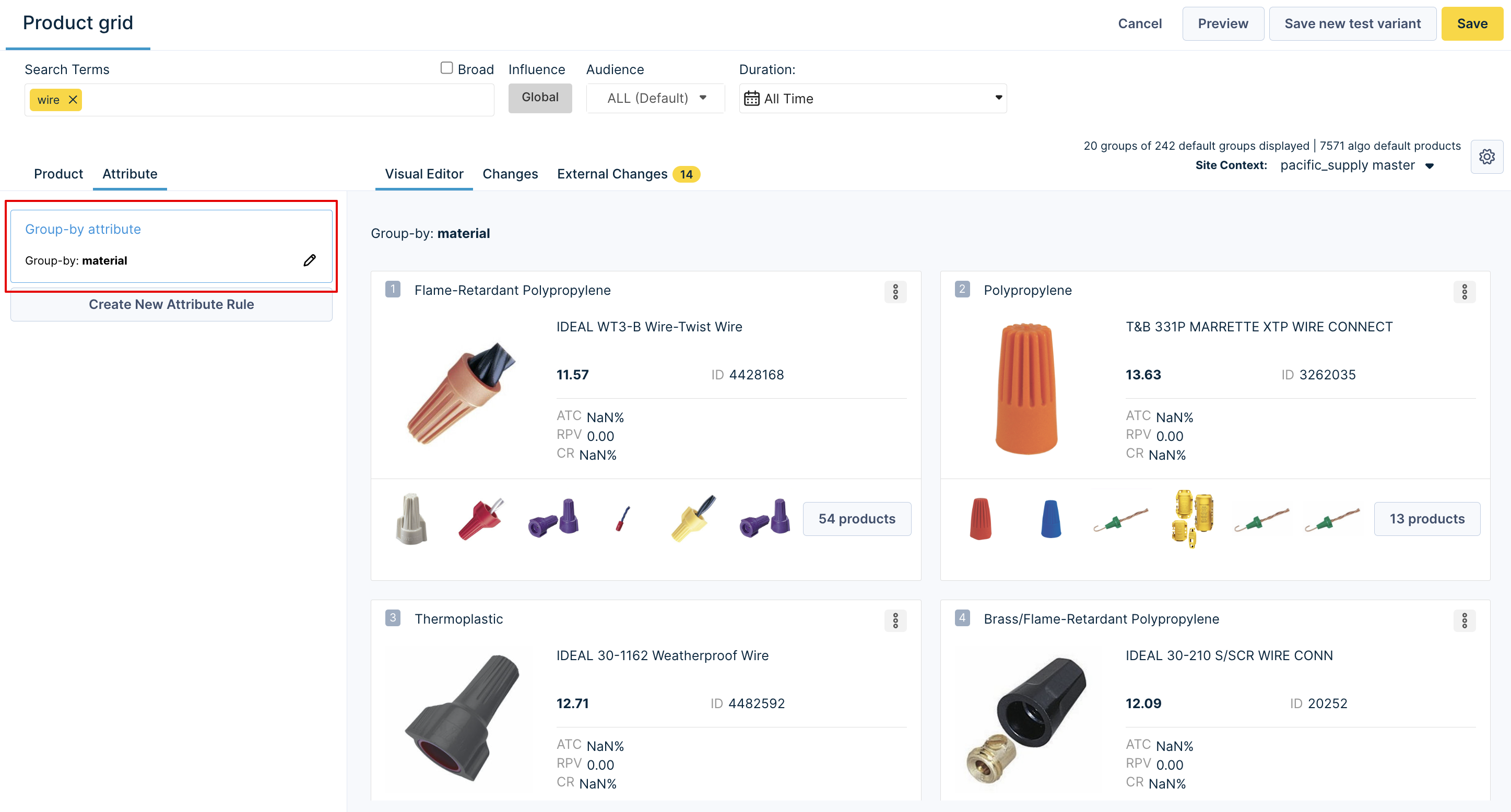
3. Explore products within groups
- Click the button at the bottom of the group to view the products in that group.
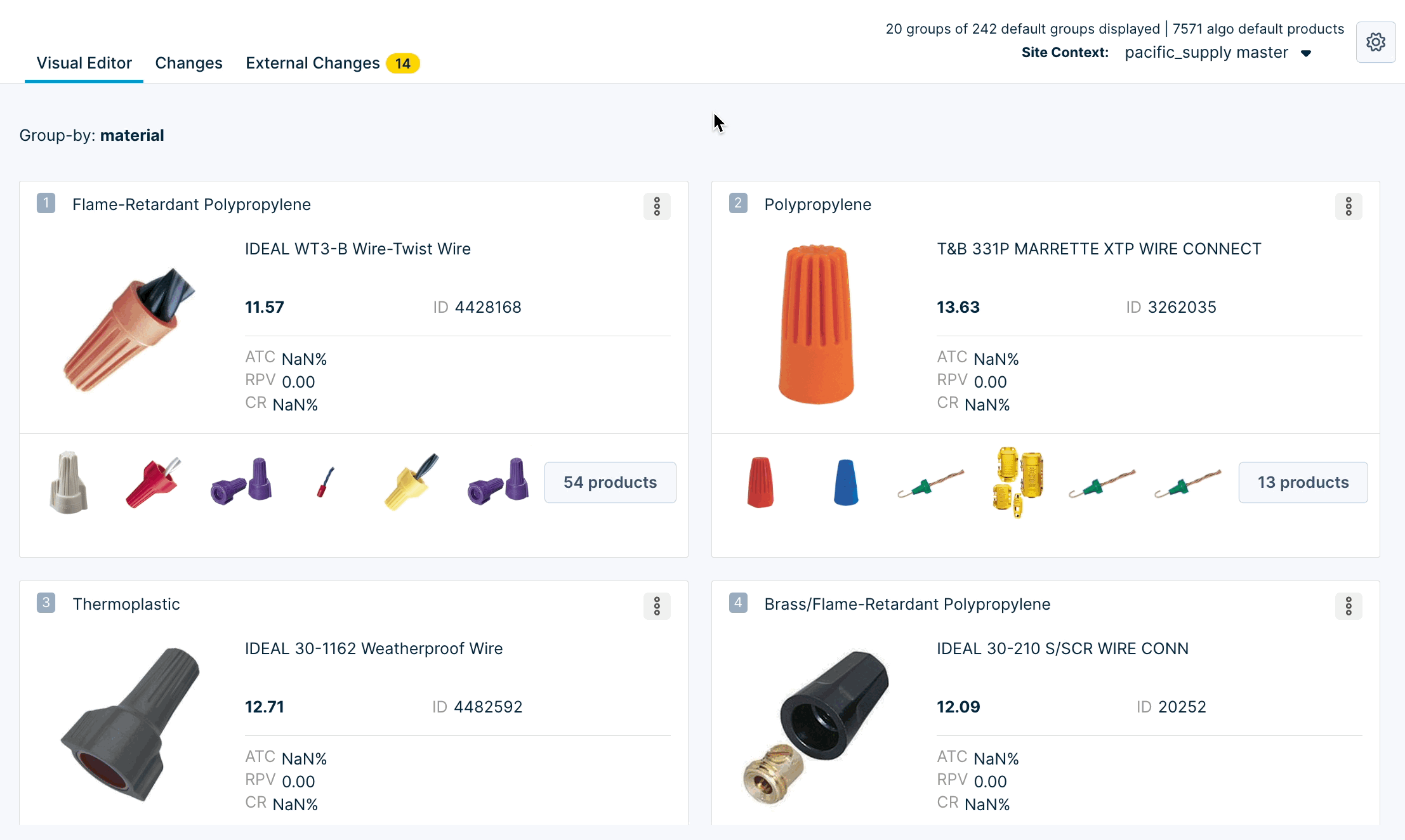
- You can also switch to a different product group using the dropdown at the top of the group view panel. After viewing the products, click Back to view the grid with all the groups.

4. Merchandise Products Within Groups
- Click the + menu in the product card's top right corner. This opens up a dropdown with the available merchandising operations:
Boost to top: Rank the product at the 1st position in the group recall.
Bury to bottom: Hard bury the product in the group recall.
Block: Remove the product from the group recall. - Choose the desired merchandising operation for the products.
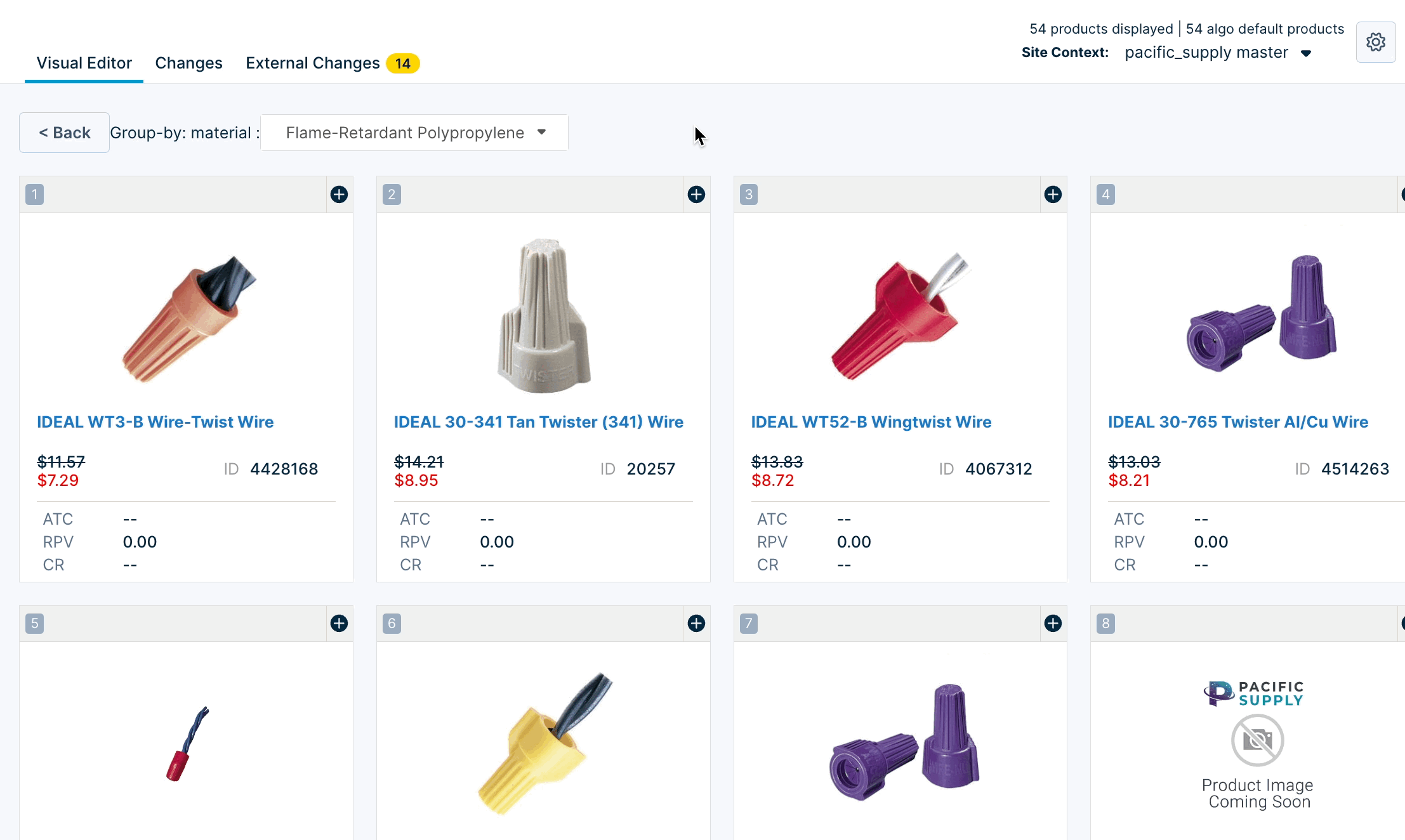
Sequential lock for products within groups
Group rules do not support Slotting [Lock in place/position]. Instead, you can lock products sequentially within a range, starting from position 1. Products falling outside of the defined range will be Algo controlled.
To sequentially lock products:
-
Click the ☸ (settings) button to reveal the dropdown. Now click the Sequential lock option.
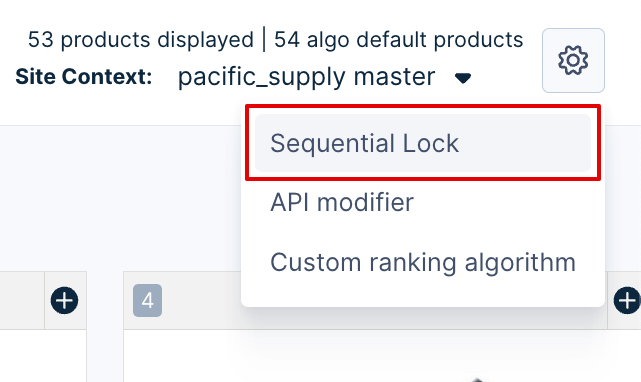
-
Specify the sequential lock range. You can lock 1024 products at a time.
-
Click Confirm.
You can now see an orange lock on the products that fall in the Sequential Lock range. The top right corner states the number of sequentially locked products.
Reordering sequentially locked products
To reposition the products, you can drag and drop the product to the desired slot.
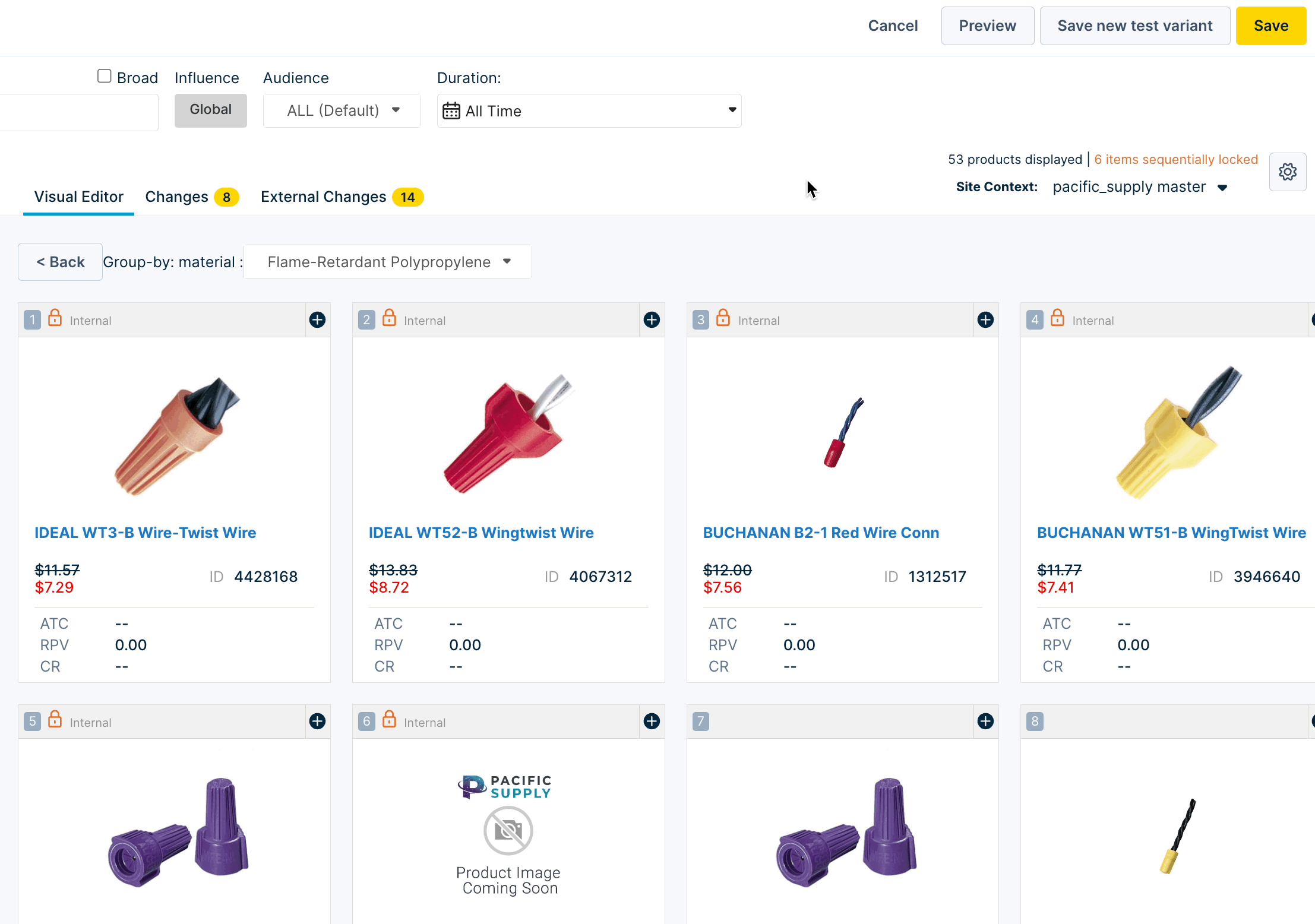
You can alternatively use the Change slot operation to set the new product position.
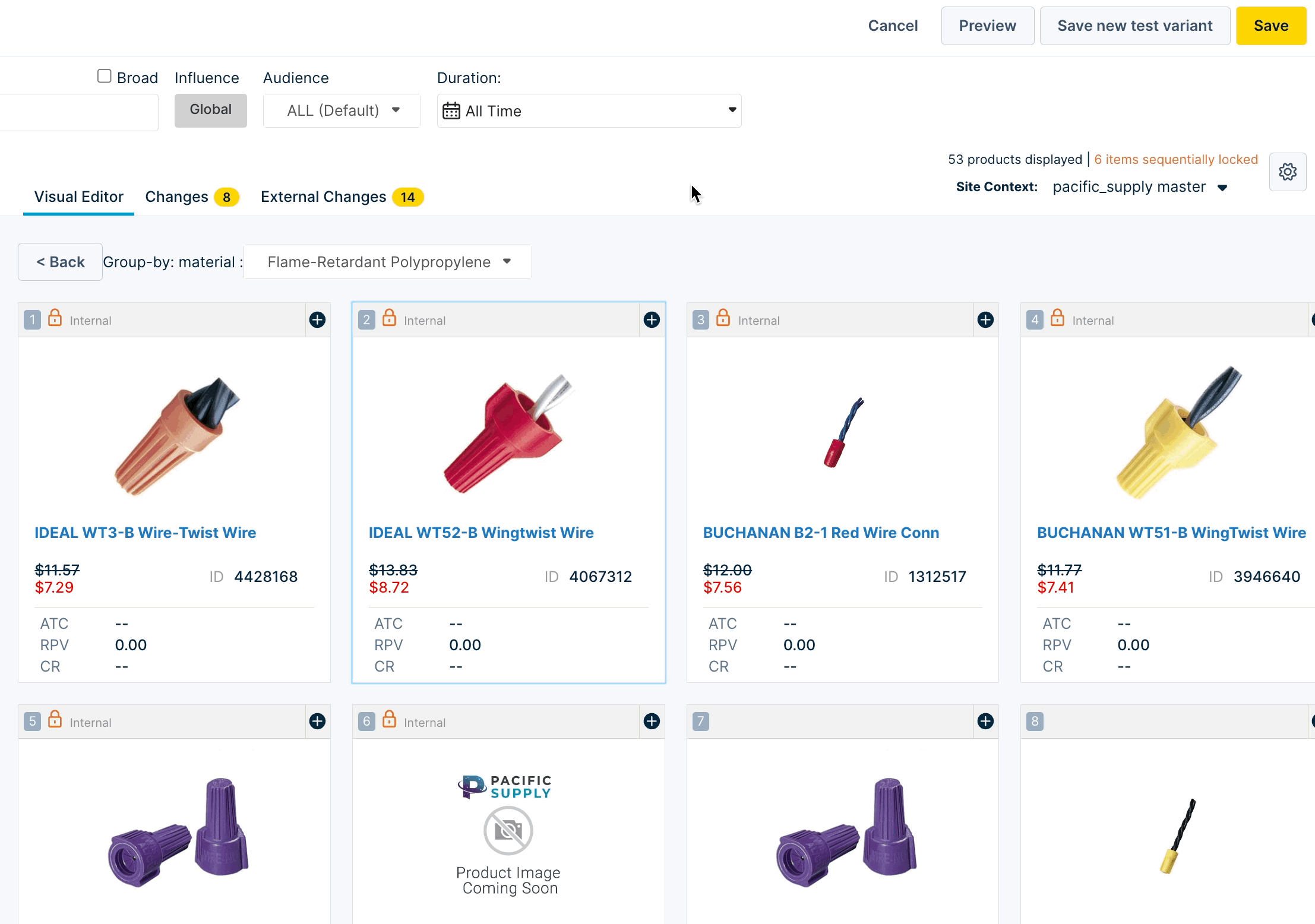
Note: If you drag and drop an unlocked product within the sequential lock range, the range will increase by one.
Unlocking products: To unlock a product, simply click the + menu to open the Operations menu and choose Unlock.
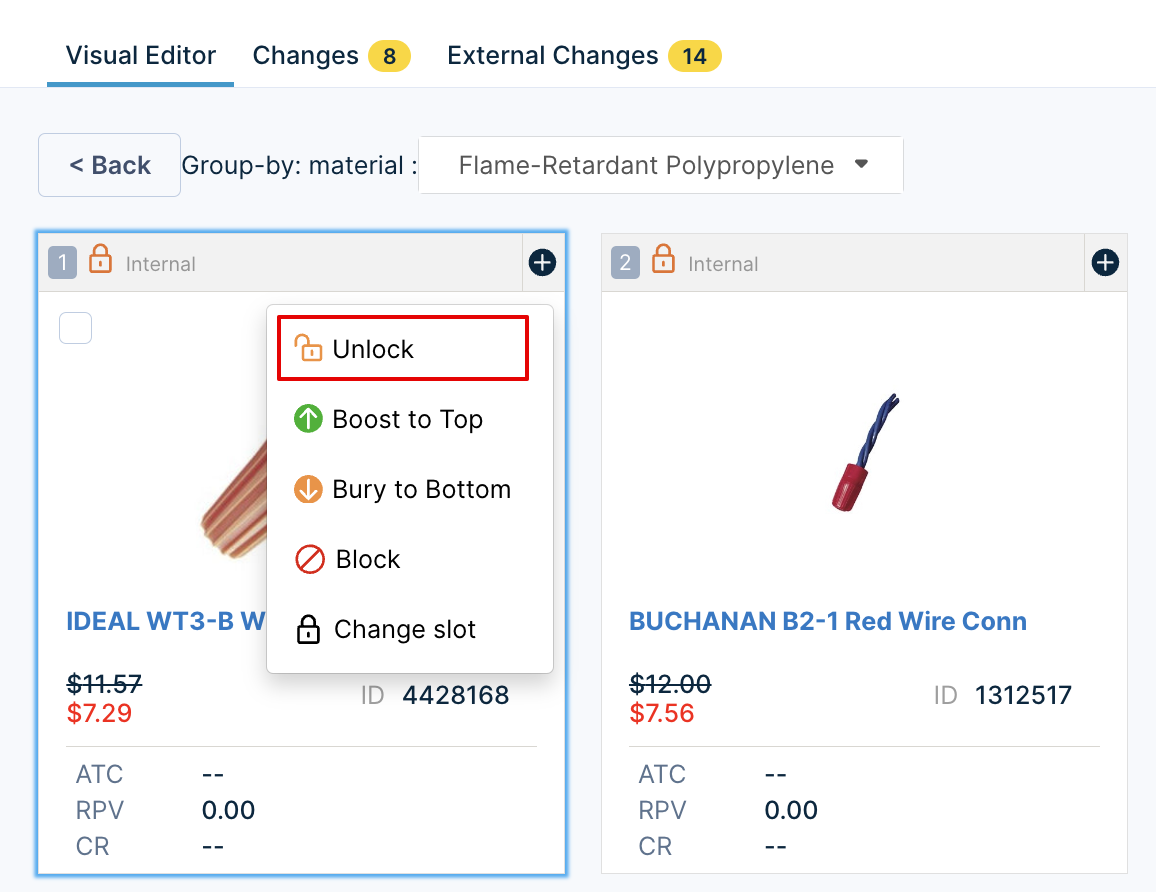
Please note that the Algorithm will determine the new position of this product. All subsequent products within the sequential lock range will move over by one position.
Notes
-
Attribute rules are currently not supported for products within groups.
-
Using the Product tab in the left-hand side panel, you can boost, bury, block individual products, or add them to the group recall. The products will be added to the recall of their respective group.
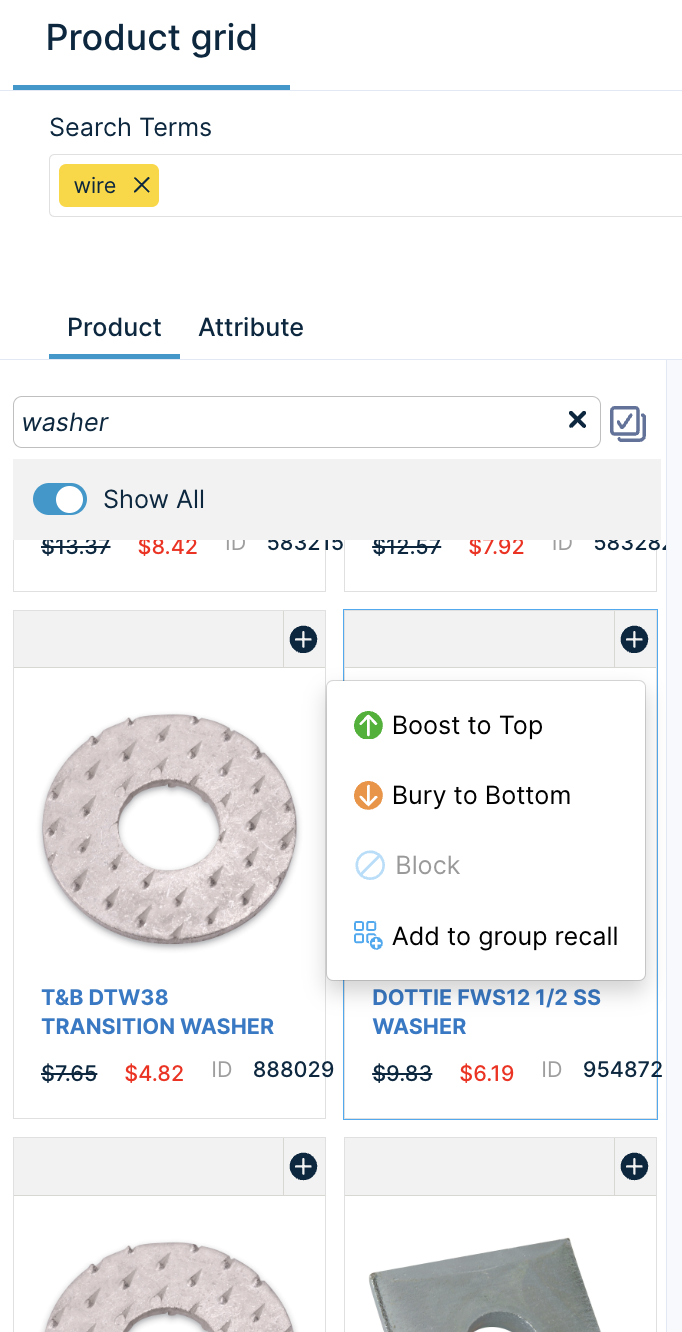
5. Merchandise Product Groups
- Click the three-dot icon
 in the group card's top right corner. This opens up a dropdown with the available merchandising operations:
in the group card's top right corner. This opens up a dropdown with the available merchandising operations:
[Group] Boost to top: Rank the group at the 1st position in the recall.
[Group] Bury to bottom: Hard bury the group in the recall.
[Group] Block: Remove the group and its products from the recall. - Choose the desired merchandising operation for the product group.
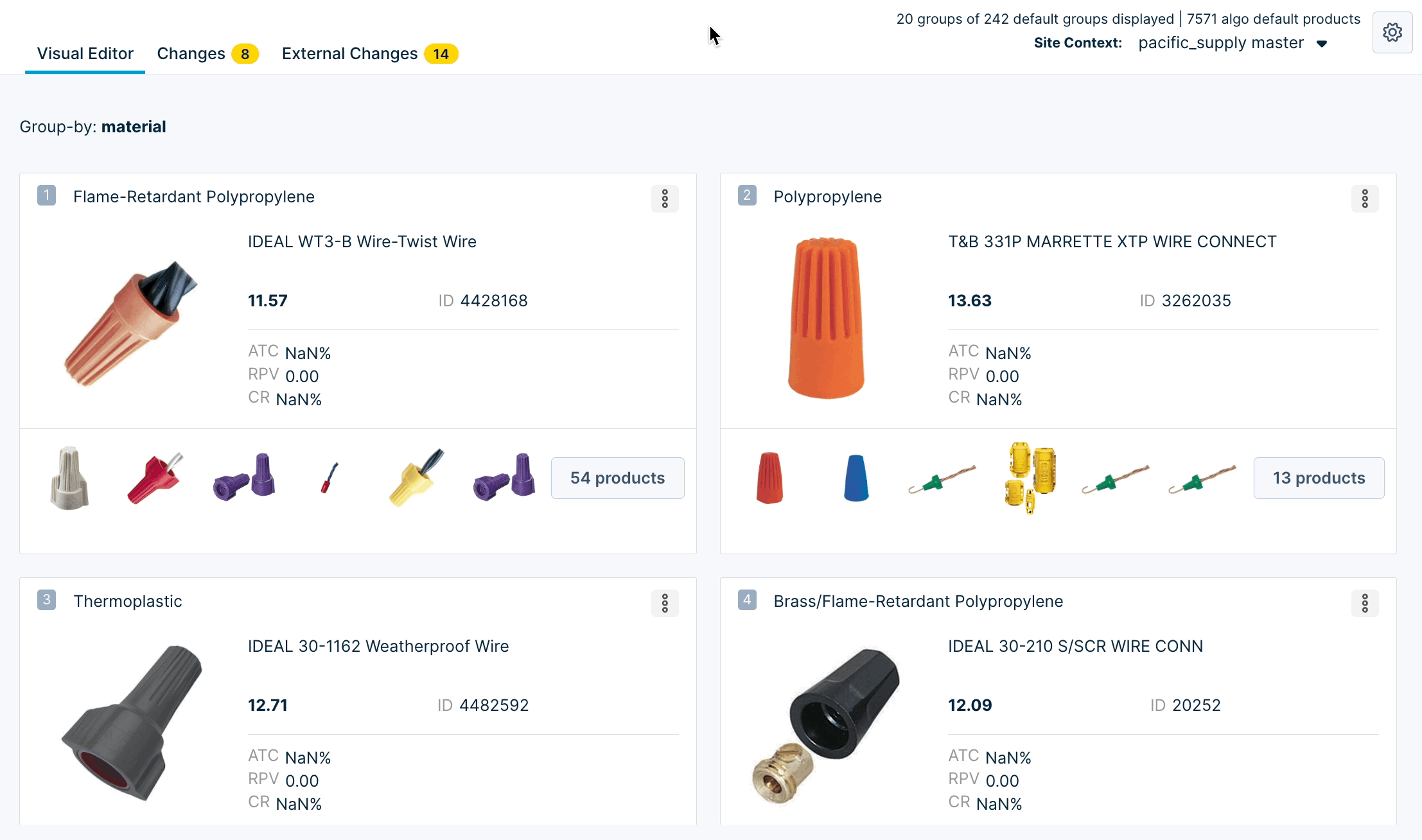
[Group] Sequential lock
Group rules do not support Slotting [Lock in place/position]. Instead, you can lock groups sequentially within a range, starting from position 1. Groups falling outside of the defined range will be Algo controlled.
To sequentially lock groups:
-
Click the ☸ Settings button to reveal the dropdown. Now click the Group Sequential Lock option.

-
Specify the sequential lock range. You can lock 1024 groups at a time.
-
Click Confirm.
You can now see an orange lock on the groups that fall in the Sequential Lock range. The top right corner states the number of sequentially locked groups.
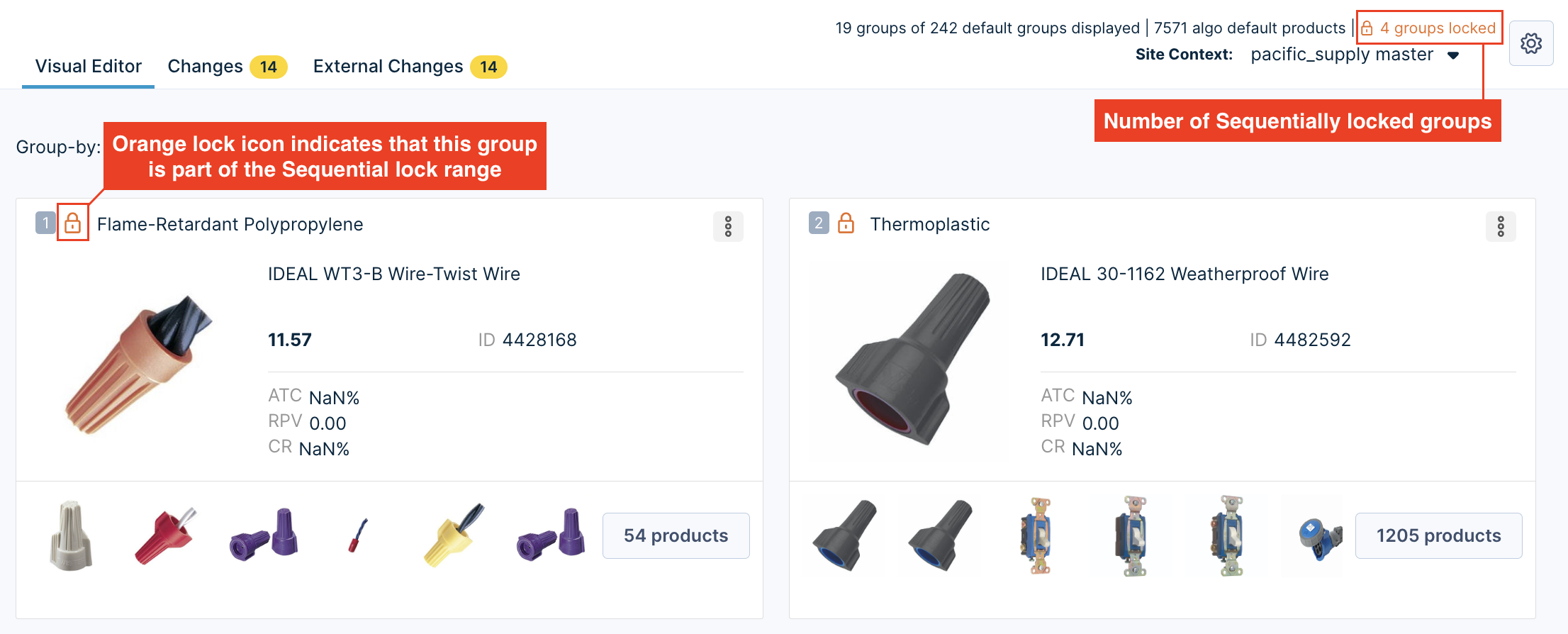
Note: Others* group cannot be sequentially locked; hence it's not included in the sequential lock range count. It will appear right after the last sequentially locked group.
Reordering sequentially locked groups
To reposition the groups, you can drag and drop the group to the desired slot.
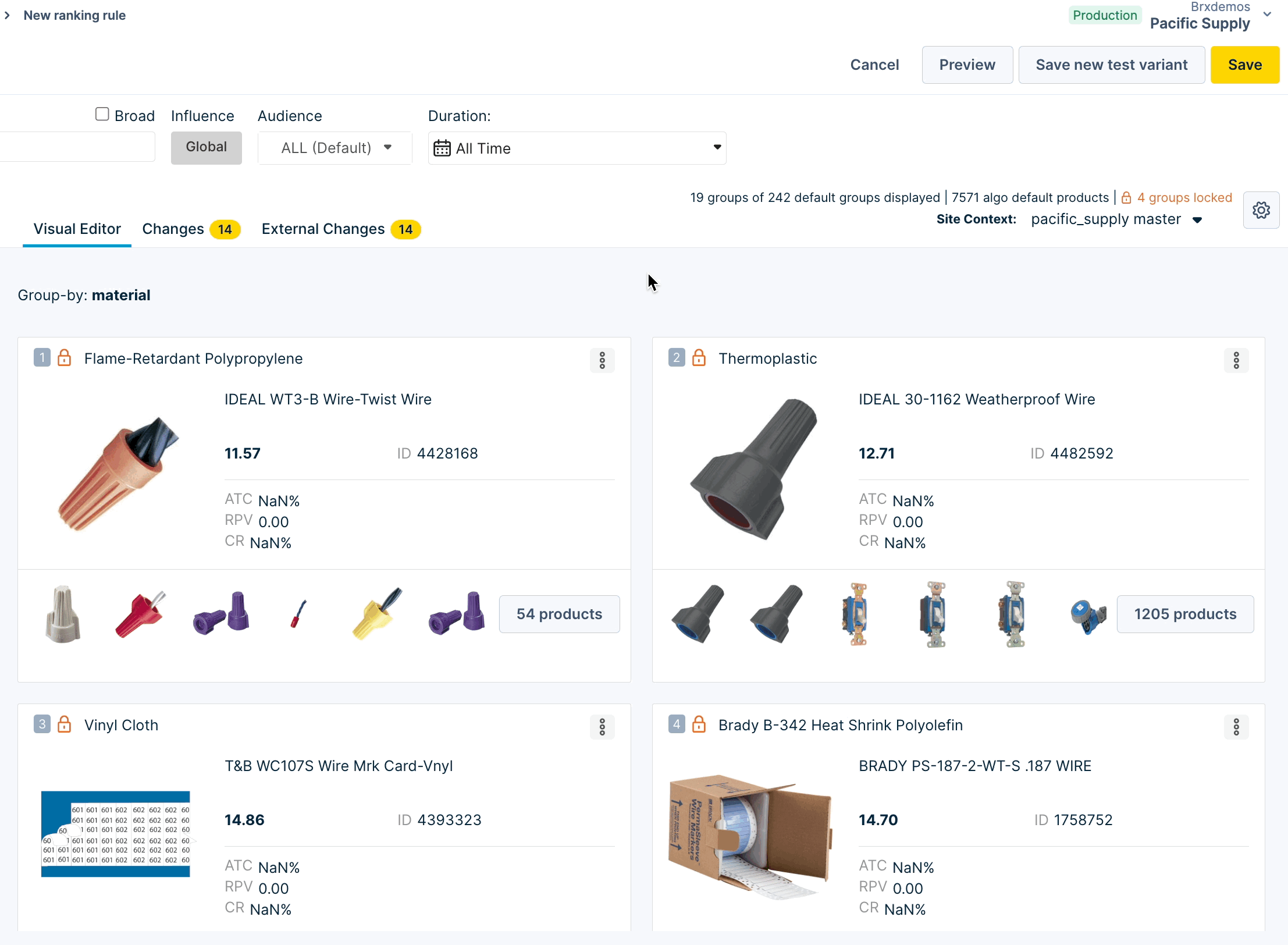
You can alternatively use the slot selector to set the new group position.
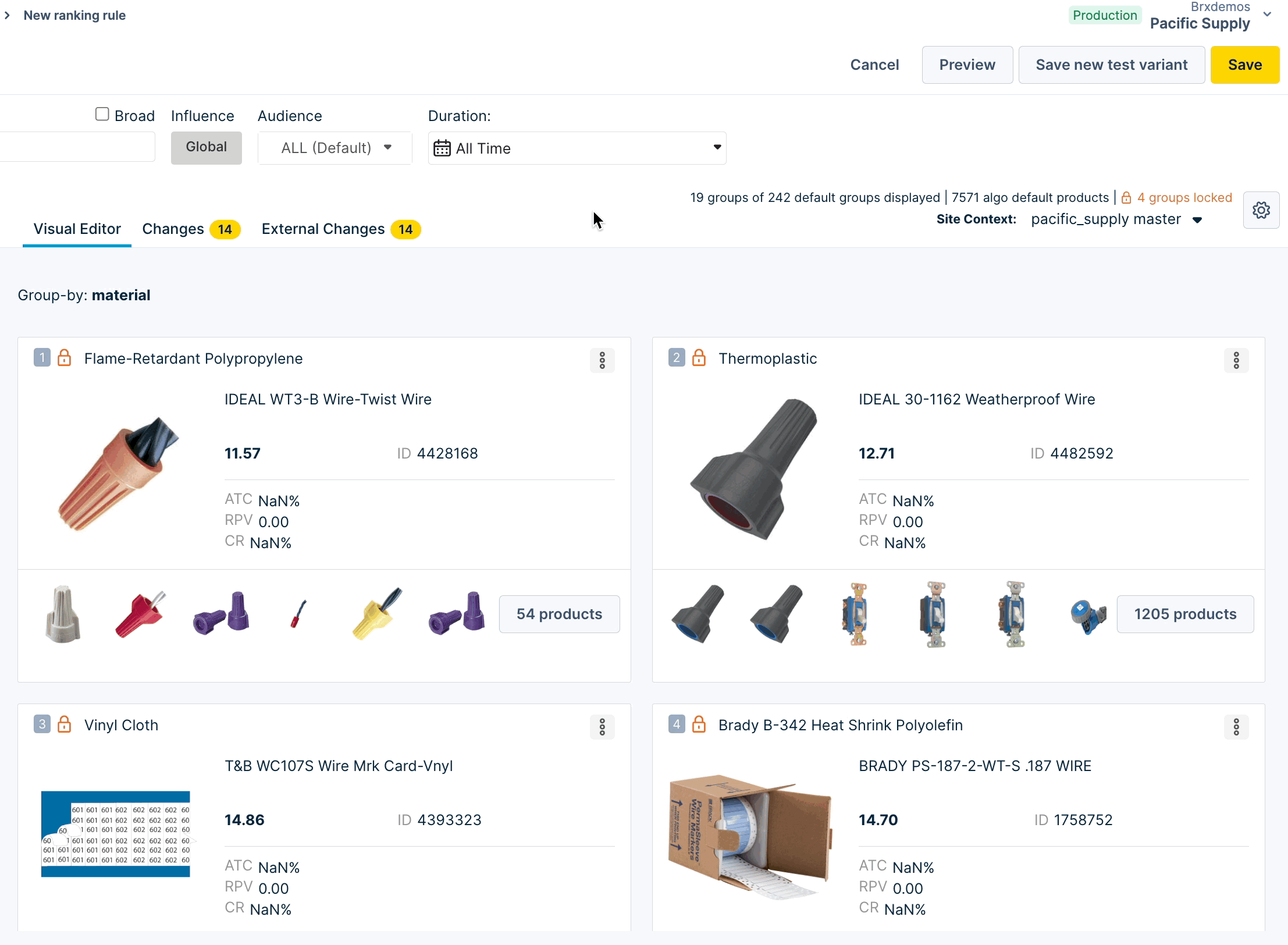
Note: If you drag and drop an unlocked group within the sequential lock range, the group range will increase by one.
Unlocking groups: To unlock a group, simply click the three-dot icon to open the Operations menu. Now choose Unlock.
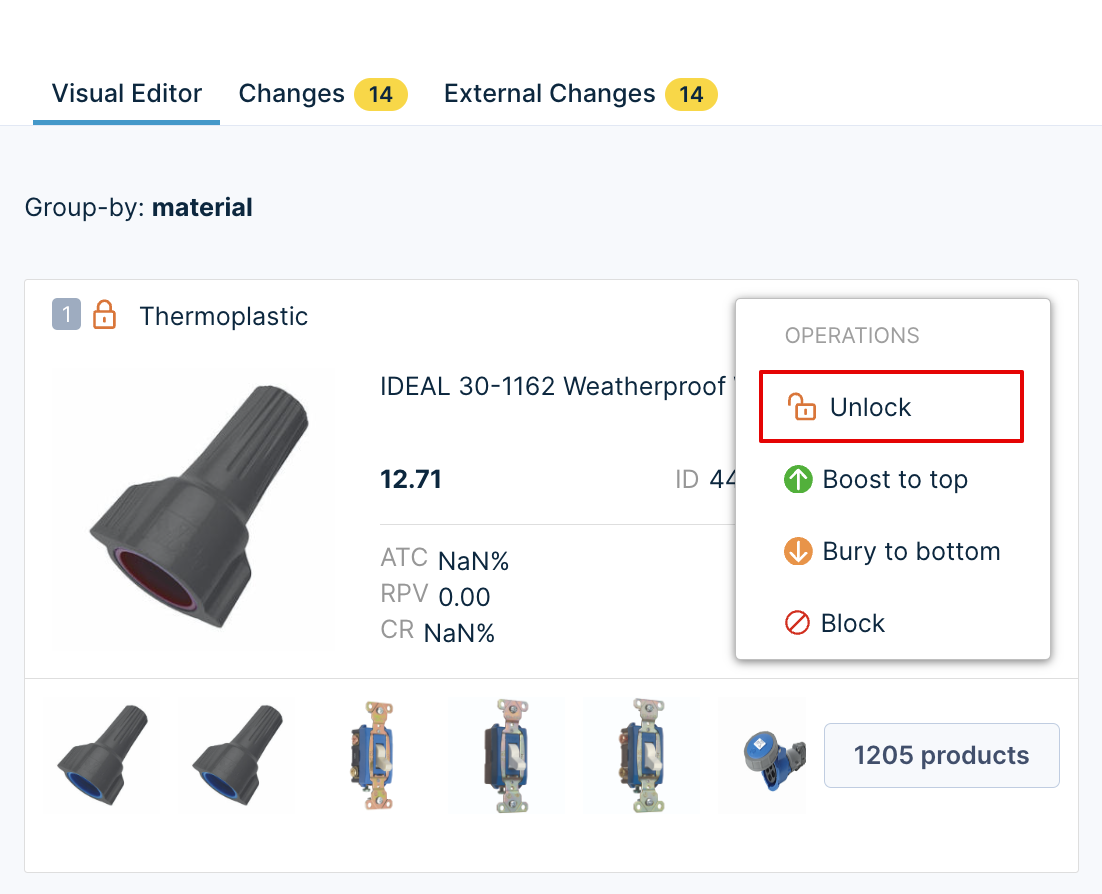
The Algorithm will determine the new position of this group. All subsequent groups within the sequential lock range will move over by one position.
Adding product to Recall with Left side search panel
You can use the Left side search panel to add products to the recall. Please note that the product will be added to its respective group based on the group-by attribute value only after saving the rule.

6. Make Attribute-based Customizations on Groups
You can make attribute-level changes at the group level. Attribute boost/bury/include/exclude within each group is currently not supported. For instance, when an attribute boost rule is applied, the products in every group will be given a boost first. Then, the groups will be re-ranked based on the top products within each group. This also applies to other attribute-based operations such as bury, include, and exclude. To apply group attribute rules, follow the steps below:
- Click “Create New Attribute Rules.”
- Now click “Product Description Attributes” to reveal the list of product attributes. In the example below, we chose the on Sale attribute.
- Choose the desired attribute value that you’d like to boost/bury/include/exclude. In the case of boost/bury operations, set the strength of the attribute rule. In the example below, we set an attribute boost rule that’d boost the groups with the highest number of on Sale tables.
- Hit Done. The groups are now ranked as per the new attribute rule.
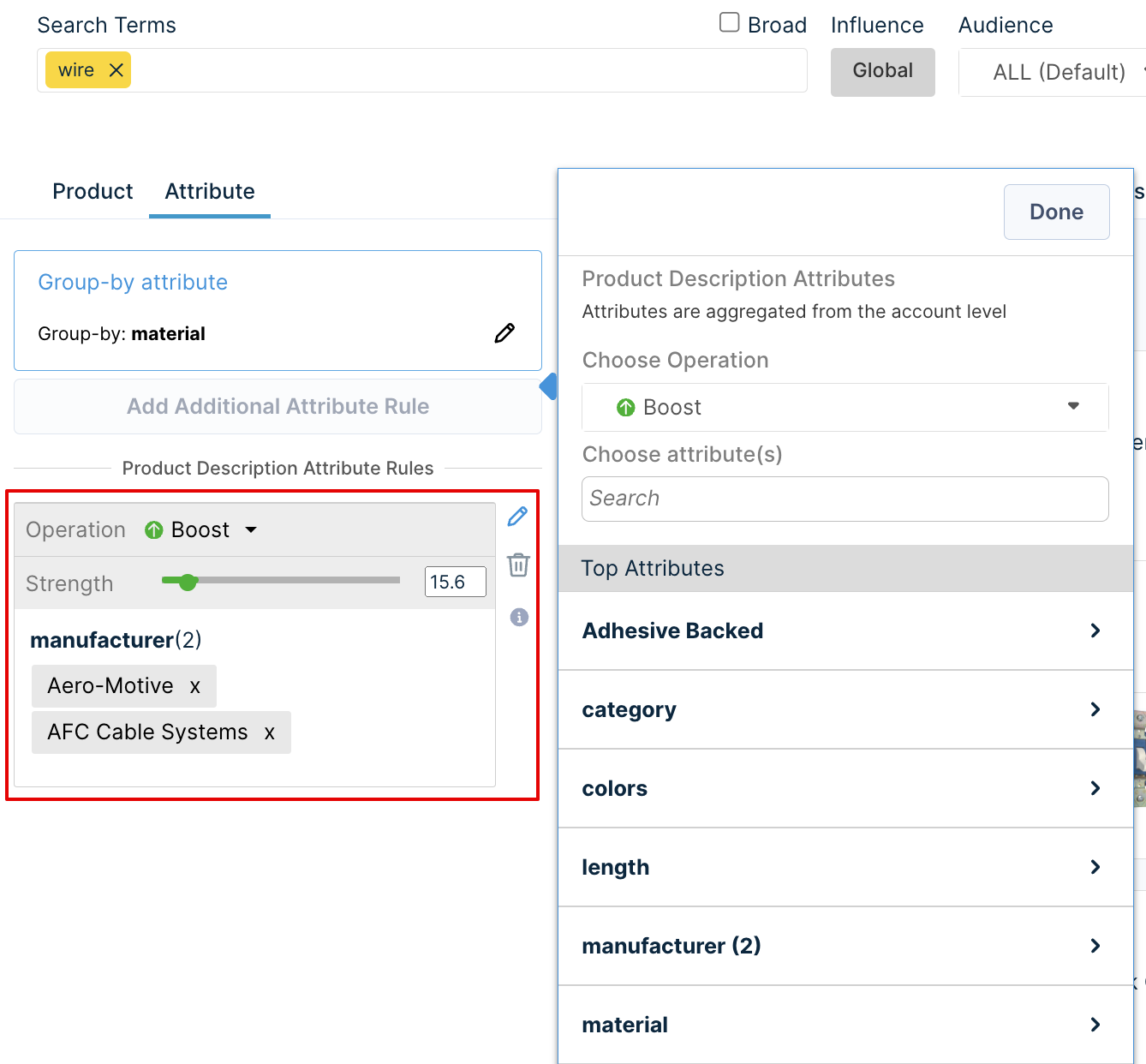
7. Review Changes
-
Go to the Changes tab to see a summary of the changes.

-
You can review all the merchandising operations applied to the groups using the Preview button at the top right of your screen.
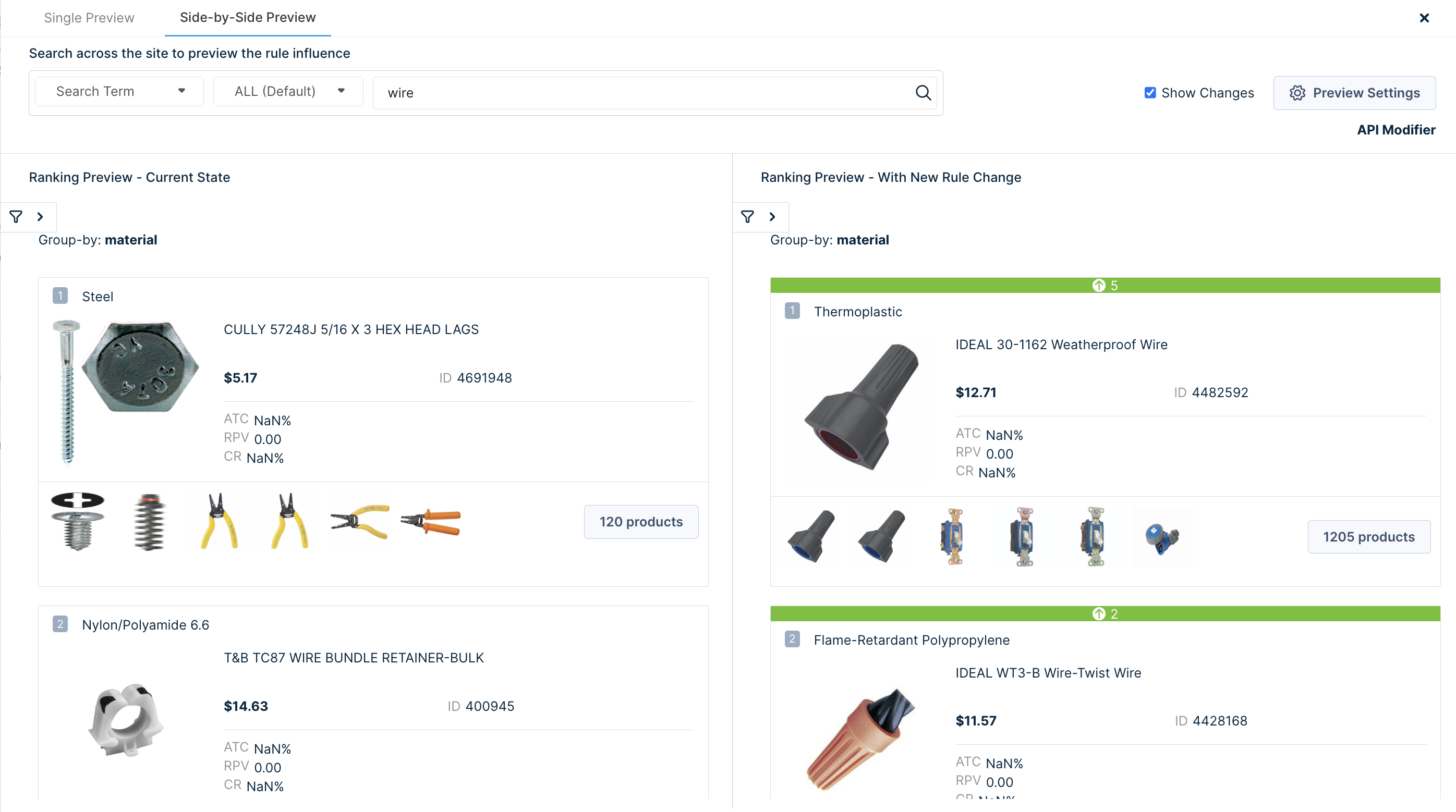
8. Save the Group Rule
Once you’re satisfied with the changes, click “Save.” Now you can see your group rule listed on the Search Ranking Rules homepage. The group rule can be identified by the “Group by” label under the query name. The Group by label also specifies the attribute that you’d need to send in the Grouping API request.
For instance, the illustration below shows “Group by: material" for the wire query rule. To get the merchandised results on the front end, you must pass the “groupby=material” parameter in the Grouping API request.

Please note that Category group rules follow a similar workflow as described above.
Points to remember
- Products that do not have a value for the selected grouping attribute will be clubbed under the Others* group. We do not support merchandising operations for products within the Others* group.

- An attribute can be used for grouping results if it satisfies the following conditions:
-
It must be an indexed, single-valued text attribute.
-
It cannot be a numeric attribute.
-
It cannot be a SKU attribute.
Please note that Reserved attributes, such as PID, brand, etc., cannot be used for grouping. The selection for unavailable attributes is disabled.
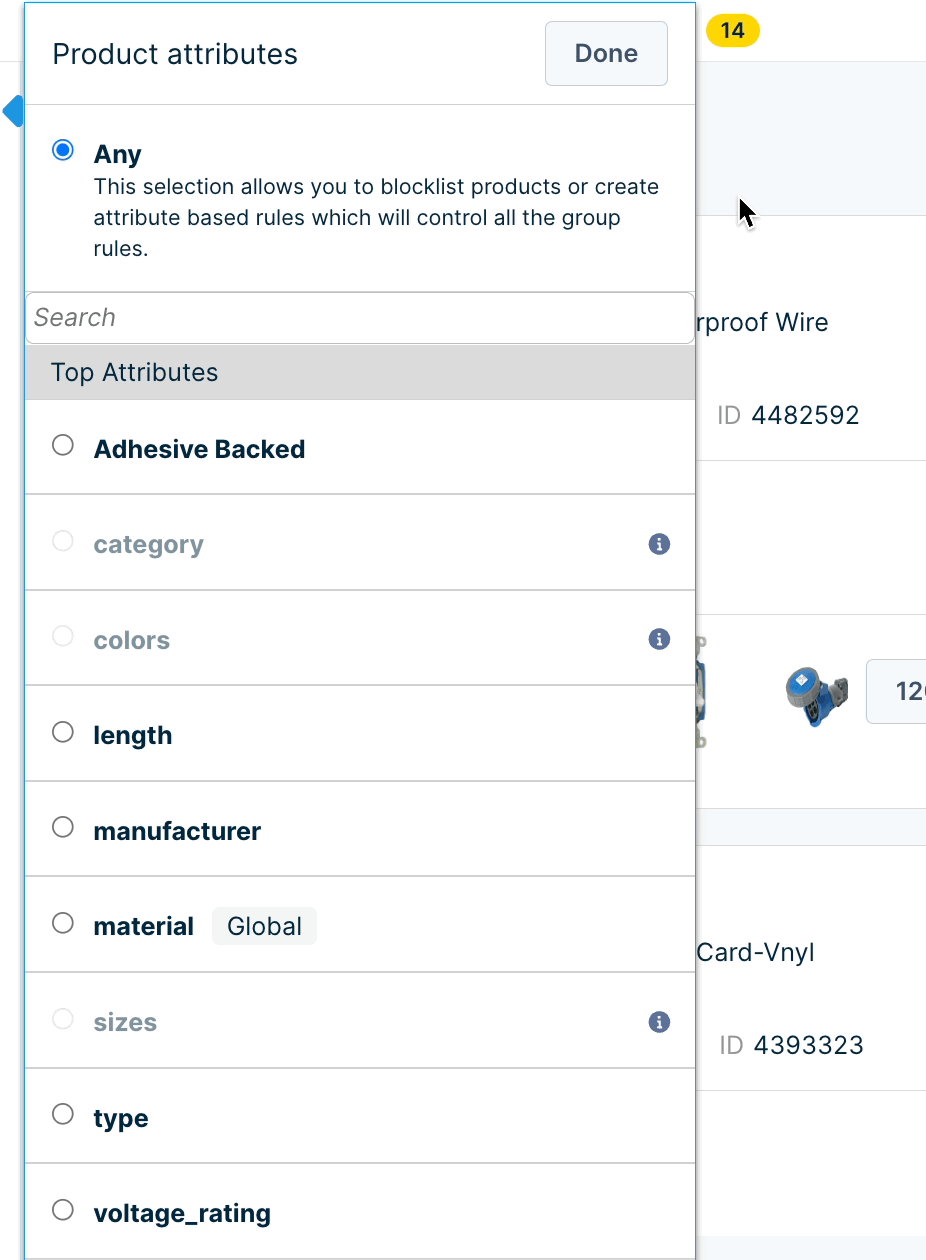
-
To change the grouping attribute, click the edit [✎] symbol on the Group-by attribute panel and choose another attribute as needed.
-
You can confirm the global level changes under the External Changes tab.
-
To select and upload products in bulk, use the Product Bulk selection option under the Product tab. The products will be added to the recall of their respective group. You can apply bulk operations, namely boost, bury, block, and add to group recall. The changes are visible under the Changes tab. For a detailed walkthrough of the product selection process, visit the Bulk Select Products guide.
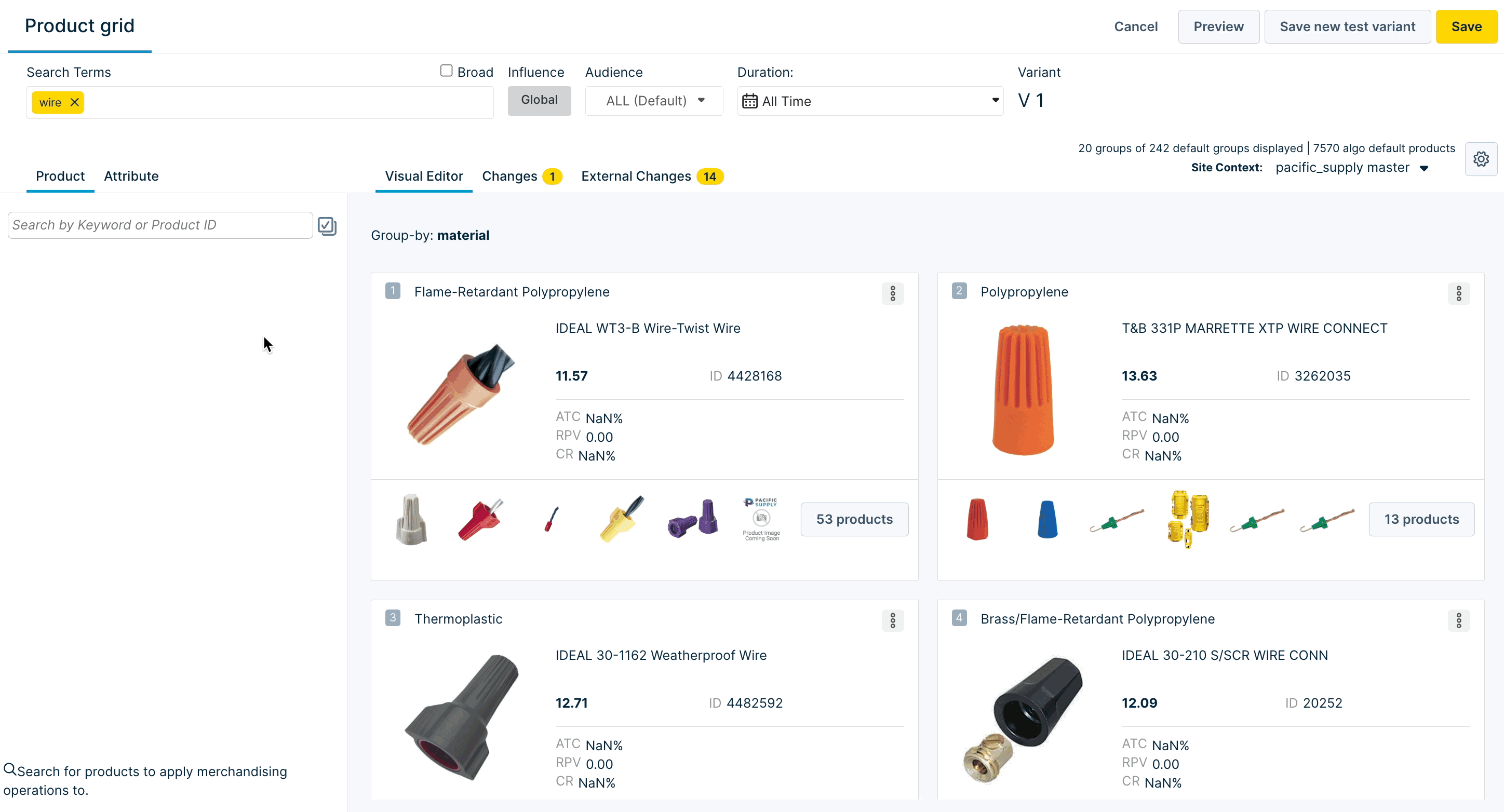
-
Using Bulk Operation, you can boost, bury, and block products within a group in bulk. Please note that Group bulk operations are not supported.
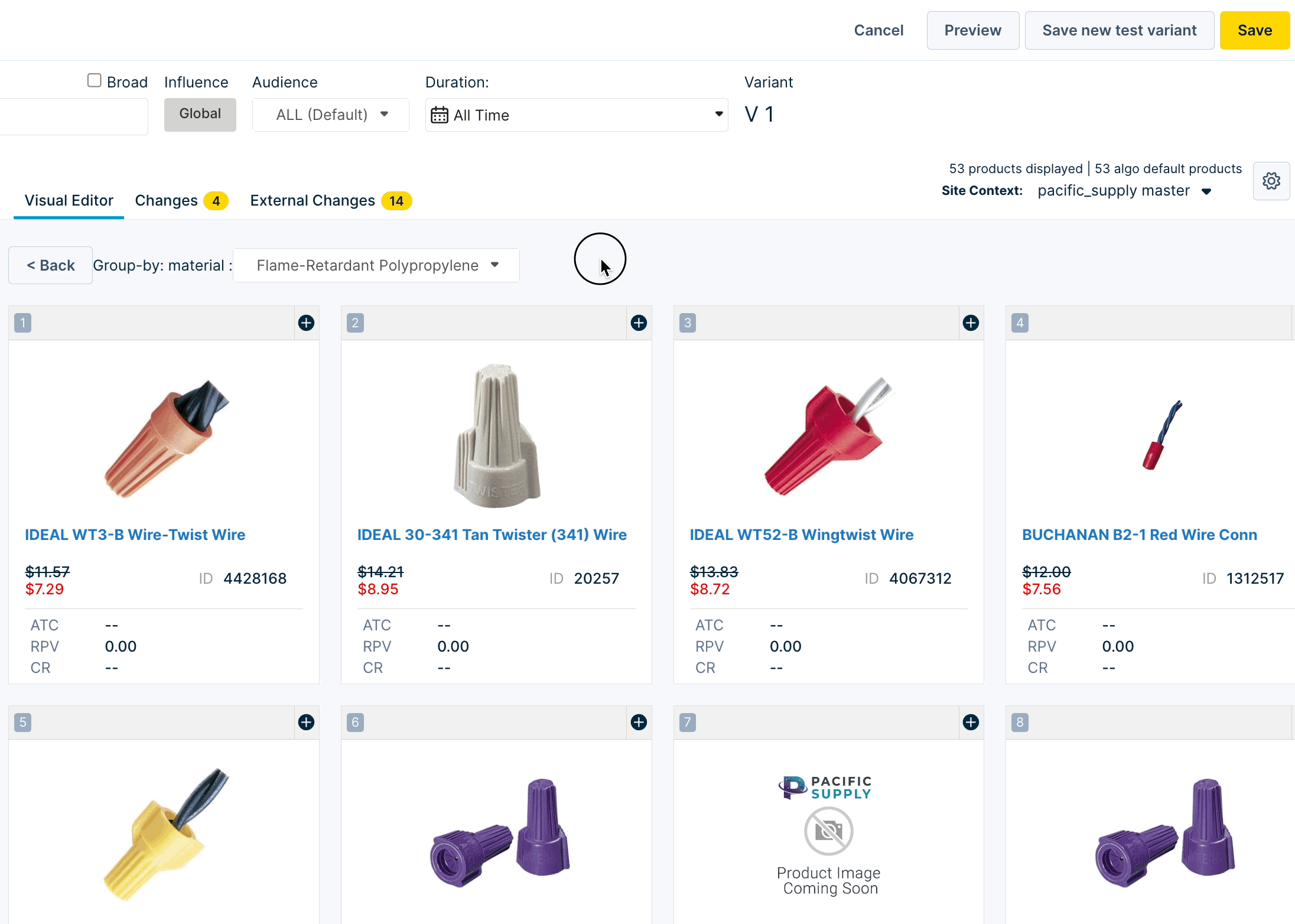
-
In the Visual Editor, the number of products on the group represents the count of default algo products. However, in the Preview module, you’ll see the updated count of products after merchandising customizations.

You can also directly group products by a specified attribute at run-time on the API. Visit this guide to learn more.
Known Issues
- Drag-and-drop functionality to reorder groups may not work as expected for group rules. You can modify the order of groups by using the slot number selector instead. We will fix this in an upcoming release.
Cloning Search and Category Rules as Group Rules
Group Merchandising allows you to clone existing Search or Category rules as Group rules. Follow the steps given below to clone a Search(or Category) ranking rule as a Group rule:
-
Go to the search rule and open the ▼ dropdown that appears on hovering over the desired rule.
-
Choose “Clone as a group rule”.

-
The Product Grid Editor opens up. Now, select the Group-by attribute and follow the same workflow as described above.
-
Once you’ve made the desired customizations, click Save.
Please note that while cloning a Search/Category rule as a Group rule, the existing attribute-based rules and blocklisted products can be copied over. It does not copy over the Product Boost, Bury, or Slot rules. You can add these merchandising customizations individually for the groups and products within the groups.
FAQs
-
How do merchandising operations impact the ranking of groups?
Operations applied to Groups- Group operations take the highest precedence. Suppose there is a group A ( with P1, P2 ) and group B ( with P3, P4 ). If P1 has a score of 50 and P3 has a score of 60, group B will be ranked first by default. However, if you sequentially lock group A in position 1, it takes the highest precedence.
- The same applies to Group boost/bury. Group block will impact the recall as well.
- Attribute-based rules: Attribute include/exclude rules impact the recall and group ranking. Attribute boost/bury rules impact the ranking of groups.
Operations applied to Products within Group
- These operations only affect the ranking of products within a group. Boost/Bury/Sequential lock on products within a group will not change the ranking of the group. Suppose group A ( P1 - score 50, P2 - score 40 ) is ranked in position 1, and group B ( P3 - score 45, P4 - 35 ) is in position 2. If you boost P4 and the new score is 100, there is no impact on the group ranking.
- In the case of a product blocklist, if the first product is blocked from the recall, then it will impact the ranking of the group.
Debug group rules
You can view grouped recall and debug group ranking using Product grid insights.
-
Can I AB test group rules?
You can AB test group rules via the API. Suppose you have created a group search rule for "backpacks" that groups the results by "product-brand" attribute. You can then set up 2 variants of this rule:
Variant 1: In this variation, when searching for "backpacks" grouped by "product-brand", boost the Gucci brand group.
Variant 2: In this variation, when searching for "backpacks" grouped by "product-brand", boost the Gucci and Prada brand groups.
These can be AB tested to see which variant performs better. Please note that the AB test cannot be controlled via the dashboard. You can control the test directly on the API using the grouping parameters (say “groupby=product_brand”). On the dashboard, you can just create and view multiple test variants. Read this guide to learn how you can create multiple variants.
Updated 8 months ago
